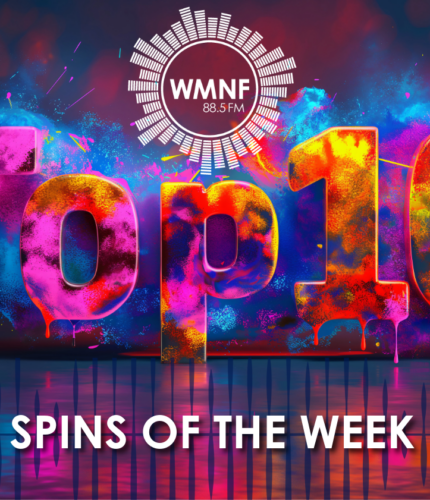
Policies, Movements, & Music
While science is generally thought to have a significant influence on public policy, art can also have a significant impact on raising awareness of certain issues and facilitating the creation of both in-person and virtual movements. The Black Lives Matter movement was one of the most recent well-known movements that was greatly impacted by art and music. At this time, there was a surge in songs that discussed the violence and disillusionment of racism, as well as how it continues to systemically oppress minorities. Not only has music helped raise awareness about environmental justice, but it has also facilitated the creation of numerous protest anthems that have been consistently used for years.
“Dont Look Up” & Climate Change
Even the film “Don’t Look Up” addresses the massive influence social media and music have on the creation of protests and movements. In that movie, there are two astronomers trying to warn the public of a comet that will destroy human civilization. The comet serves as an allegory for climate change, which is an issue that is massively underrepresented by public policy. They had no choice but to rely on social media and the celebrity endorsements of prominent figures, most of whom were musicians, to raise awareness about the issue. The science alone was not enough to sway public opinion on the issue, and Adam Mckay (writer, director, and producer of “Don’t Look Up”) addresses this in an interview with Entertainment Weekly. He says, “I started talking to a lot of [climate] scientists. I kept looking for good news, and I never got it. Everything I was hearing was worse than what I was hearing in the mainstream media.”
As consumers, we appear to have developed a dependency on mainstream media, allowing it to influence our personal beliefs and views on certain issues. We rely on these ideologies, created by certain political groups and pushed out by massive media groups, to inform our decisions. This has ultimately created a massive political polarization issue in our country, creating a divide that makes it difficult to even associate with others with different political beliefs. However, one force that I believe brings all people together, regardless of ideologies, is music.
Music & Counterculture Awareness
During the 60’s, hippies became a part of counterculture, and it was used to spread awareness about the civil rights movement and to oppose the Vietnamese War. Many musicians, including Joan Baez, Bob Dylan, and Joni Mitchell had songs that were used as peace anthems during this era.
In January of 1969, this country experienced one of the most massive oil spills in history. According to the National Oceanic and Atmospheric Administration (NOAA), the Union Oil well had spilled over 200,000 gallons of oil over the course of 11 days. This incident had created massive outrage, especially amongst young radicals in the hippie community, since it had shed light on the poor state of the environment.

This began to be reflected in music, with Joni Mitchell releasing “Big Yellow Taxi” only a year later. In that song, she protests urban development and how it is destroying nature. Her lyrics were used in environmental protests within the hippie community. The lines that were most commonly used were– “Don’t it always seem to go that you don’t know what you’ve got ‘til it’s gone/ They paved paradise, put up a parking lot.”
Another song that was used during environmental protests was Paradise by John Prine, which was released in 1971. His song was focused on the environmental damages strip mining would have on rural communities. The lyrics at the time that were used were- “Then the coal company came with the world’s largest shovel/And they tortured the timber and stripped all the land/Well, they dug for their coal till the land was forsaken/Then they wrote it all down as the progress of man.”
First Official Earth Day
The sudden surge of environmental activists caught the attention of Gaylord Nelson, a democratic senator from Wisconsin. After the oil spill, he went to a water conference, and on that trip, he learned about anti-war events held by colleges in the area. He had seen it as a way to further expose young people to environmental issues, and after seeing the enthusiasm they had for change, he was inspired to try to create the first official Earth Day, which took place on April 22, 1970.
Around 250,000 people gathered in New York to raise awareness of environmental issues, and the song “Big Yellow Taxi” played a major role in uniting people, as evidenced by the posters with the lyrics displayed by many attendees. This paved the way for Congress to authorize the creation of the Environmental Protection Agency (EPA), which is the source of a number of environmental bills. In the following three years, the EPA created the Clean Air Act (1970), the Clean Water Act (1971), and the Endangered Species Act (1973). Earth Day was established to raise awareness of the need for ongoing environmental changes, and it has had a significant impact ever since.
Since then, there have been multiple songs that have been significant to the environmental justice movement. These songs include:
Alabama – ‘Pass it on Down’ (1990)
John Anderson – ‘Seminole Wind’ (1992)
Neil Young – ‘Be The Rain’ (2003)
Melissa Etheridge – ‘I Need to Wake Up’ (2006)
Dar Williams – ‘Go To The Woods’ (2012)
One Response to “From beats to conservation: Exploring the role of artists in environmental justice”
Leave a Reply











It seems like people were more eco-conscious, at least in music, then than now. It is much, much worse now (this goes without saying.)